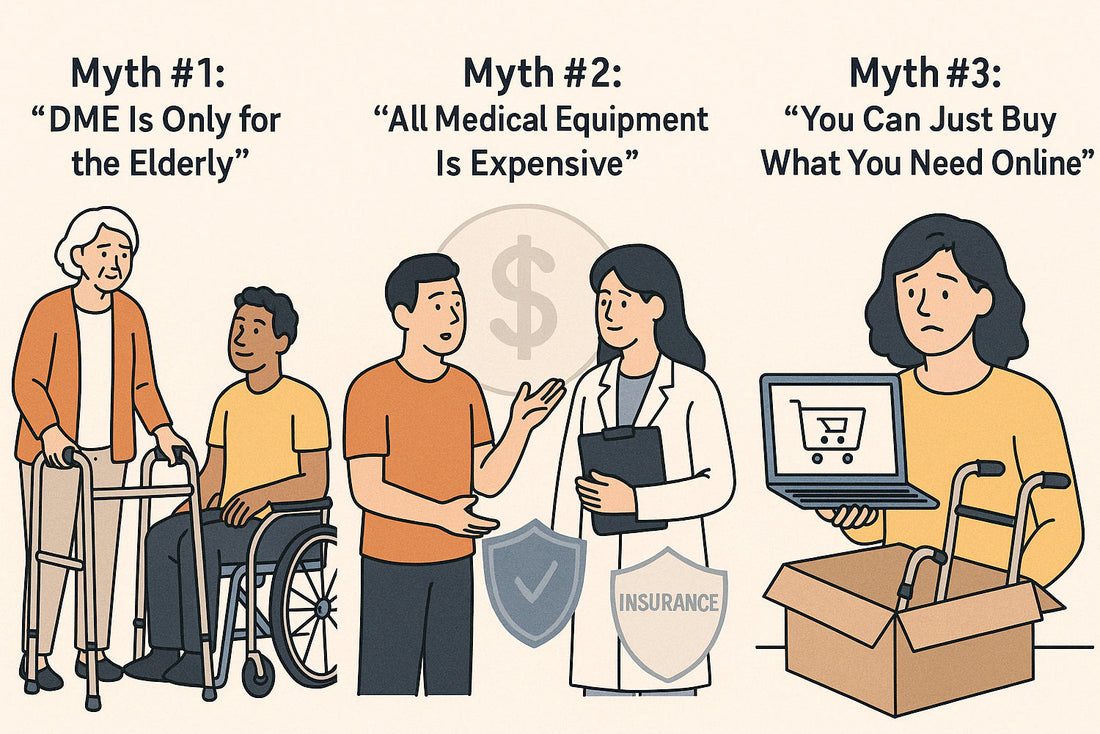Making the move from hospital to home can feel overwhelming. Whether you or a loved one is recovering from surgery, an injury, or managing a chronic illness, the process involves more than just leaving a hospital bed behind. It requires careful planning—and the right durable medical equipment (DME) to support recovery and ensure safety at home.
At SurfMed, we’ve seen how the right equipment can make all the difference. We’ve also noticed that many families hesitate or make the wrong choices because of common misconceptions about DME. In this post, we’ll debunk those myths and guide you through what’s needed for a smooth, safe transition from hospital to home.
What Is Durable Medical Equipment?
Durable medical equipment refers to items that provide therapeutic benefits to patients in need of medical care at home. These include walkers, wheelchairs, hospital beds, oxygen equipment, commodes, and more. DME is designed to be reusable, long-lasting, and often prescribed by a healthcare provider.
Why the Transition Home Matters
Going home can feel like a relief, but without proper equipment and preparation, it can also increase the risk of falls, infections, and re-hospitalization. DME helps bridge that gap. It provides comfort, independence, and safety during recovery.
Myth #1: “DME Is Only for the Elderly.”
This is one of the most common misconceptions. While older adults are frequent users of DME, people of all ages may need home medical equipment. Children recovering from surgery, athletes healing from injuries, and adults with chronic conditions all benefit from access to quality, appropriate DME.
Myth #2: “All Medical Equipment Is Expensive.”
Many families assume they can’t afford the right equipment. The truth? Most insurance plans, including Medicare and Medicaid, cover DME when prescribed by a healthcare provider. SurfMed’s team works with patients to verify coverage, explain benefits, and ensure you receive what you need—without breaking the bank.
Myth #3: “You Can Just Buy What You Need Online.”
Ordering from an online retailer may seem convenient, but not all equipment is created equal. Without proper guidance, you might end up with the wrong size, a poor-quality product, or something that doesn’t meet medical guidelines.
With SurfMed, you get:
- Personalized fitting and adjustments
- Product training and usage support
- Expert advice on insurance-covered options
Your safety deserves more than a random cart checkout.
Key Equipment for a Safe Transition
Depending on your medical needs, here are a few types of durable medical equipment commonly recommended for a home care setup:
1. Mobility Aids
Walkers, rollators, crutches, and wheelchairs help reduce fall risk and promote independence. Patients recovering from orthopedic procedures or managing balance issues benefit greatly.
🡒 Browse our mobility aids for options that match your lifestyle.
2. Hospital Beds & Support Surfaces
These adjustable beds allow for proper positioning, pressure relief, and easier caregiving. Pressure-relieving mattresses help prevent bedsores.
3. Bathroom Safety Equipment
Grab bars, shower chairs, and raised toilet seats make daily hygiene tasks safer—especially for those with mobility challenges.
4. Respiratory Equipment
Oxygen concentrators, CPAP machines, and nebulizers are crucial for those with respiratory conditions like COPD or sleep apnea.
5. Wound Care & Infusion Supplies
Patients going home with wounds, IV medications, or catheters need sterile, reliable supplies. SurfMed ensures proper delivery and education for these products.
How to Choose the Right Equipment
Every patient is different. That’s why it’s important to involve your discharge planner, doctor, or home health nurse in the decision. A personalized care plan, combined with our DME expertise, ensures you get exactly what you need.
Final Tips for a Safe Transition Home
- Plan ahead: Coordinate with your care team before discharge to ensure your home is ready.
- Ask questions: Don’t be afraid to speak up about what you’ll need and how it works.
- Create a safe space: Clear walkways, remove tripping hazards, and install necessary support equipment.
- Use your support system: Whether it’s a caregiver, family, or a home health agency, don’t go it alone.
In Summary: Don’t Let Myths Stop You from Getting the Care You Deserve
Durable medical equipment is a vital part of home care. It’s not just for seniors, it’s often covered by insurance, and it’s not a one-size-fits-all solution. With the right guidance and support, transitioning from hospital to home can be safe, smooth, and empowering.
At SurfMed, we’re here to help you every step of the way.

